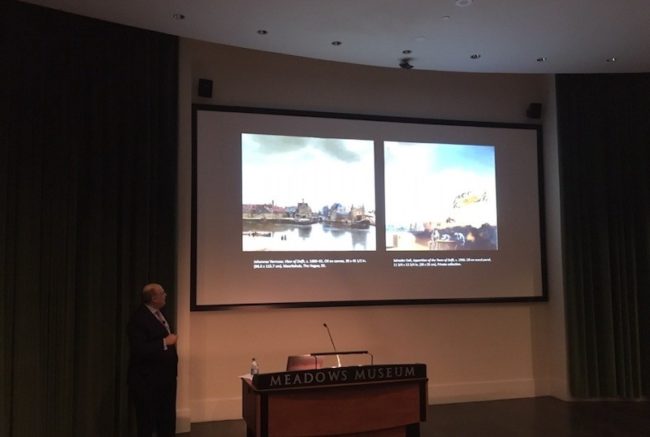Mark A. Roglán, director of the Meadows Museum, delivered a lecture Friday titled, “Intimate Images: Dalí and the Tradition of the Small.” During the talk, he discussed the newly opened Salvador Dalí exhibit, on view through Dec. 9, which specifically focuses on the artist’s smaller works.
The lecture closely examined the connection between the works of Dutch born artist Johannes Vermeer and those of Salvador Dalí.
According to Roglán, the idea for this exhibit began in 2014 when the Meadows Museum acquired “The Fish Man,” a painting of Dalí’s. Dalí is often revered for his works in surrealism, but when seeing an image of his art it is often hard to determine scale. As Roglán said, “When you think about scale in art, it matters.” This exhibit is the first of its kind to strictly focus on Dali’s smaller works and the technique behind them.
Many of Dali’s works were known to have taken some creative license from Dutch artist Johannes Vermeer. It is believed Dalí was first introduced to the artist through the book “The Masterpieces of Dehooch and Vermeer,” which was published in 1911. Roglán noted it is clear Dalí was inspired by Vermeer but does so in a way that feels fresh.
“He brings a new feel to something that existed before himself,” Roglán said.
Many similarities exist between Vermeer’s “The Lacemaker” and Dalí’s “Girl from Figures,” but both paintings interpret the subject in a uniquely different way.
“Dalí took Vermeer’s paintings and made them his own,” Roglán said.
Andre Gorzell is in her fifth year as a docent at the Meadows Museum. She believes this exhibit is important because of Dalí’s prestige.
“Dali is such a recognizable artist and people are intrigued by him,” Gorzell said. “The sort of conservative Dallas base claim to have bragging rights especially since the Meadows owns the only Dalí painting in Texas.”
In 1934, Dalí memorialized his idol Vermeer by subtly inserting images of Vermeer into his paintings. Roglán said this is first seen with Dali’s painting “Enigmatic Elements in a Landscape.” This insertion of Vermeer became a pattern in Dali’s work. For some of his paintings he even goes as far as putting Vermeer’s name in the title.
As Roglán put it, Dalí developed a vocabulary for painting. Dali enjoyed inserting small objects such as clocks, the figure of Vermeer, windows, tables, and fruit throughout his paintings.
Dalí, whose native Spain was described as a nation of grandeur by Roglan, wholly incorporated Vermeer’s Dutch style into his own painting technique. Dalí seamlessly mixed the two. As described by Roglán, “Dali is a continuity of tradition.”
Docent Jean Felsted believes this exhibit will be beneficial in getting people to the Meadows Museum.
“[The exhibit] does a great deal to entrance,” she said. “It’s uniquely focused on the small.”









